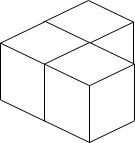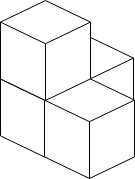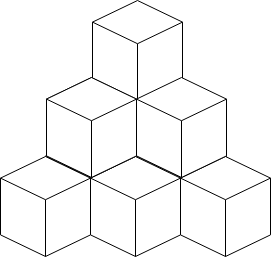You have a cubic storeroom where the width, length, and height of the room are all equal to n units. You are asked to place n boxes in this room where each box is a cube of unit side length. There are however some rules to placing the boxes:
- You can place the boxes anywhere on the floor.
- If box
xis placed on top of the boxy, then each side of the four vertical sides of the boxymust either be adjacent to another box or to a wall.
Given an integer n, return the minimum possible number of boxes touching the floor.
Input: n = 3 Output: 3 Explanation: The figure above is for the placement of the three boxes. These boxes are placed in the corner of the room, where the corner is on the left side.
Input: n = 4 Output: 3 Explanation: The figure above is for the placement of the four boxes. These boxes are placed in the corner of the room, where the corner is on the left side.
Input: n = 10 Output: 6 Explanation: The figure above is for the placement of the ten boxes. These boxes are placed in the corner of the room, where the corner is on the back side.
1 <= n <= 109
impl Solution {
pub fn minimum_boxes(n: i32) -> i32 {
let n = n as i64;
let mut lo = 1;
let mut hi = n;
while lo < hi {
let mid = (lo + hi) / 2;
let mut boxes = 0;
let mut x = (mid as f64 * 2.).sqrt() as i64;
let mut y = mid - x * (x + 1) / 2;
if y < 0 {
y += x;
x -= 1;
}
while x > 0 {
boxes += x * (x + 1) / 2 + y;
x -= 1;
y -= 1;
y = y.max(0);
}
if boxes < n {
lo = mid + 1;
} else {
hi = mid;
}
}
hi as i32
}
}

